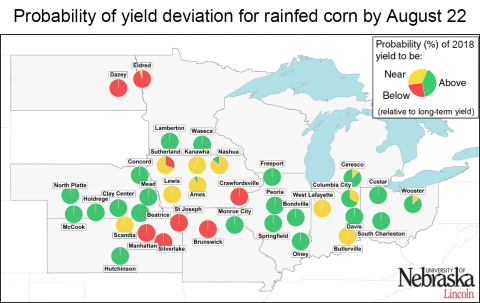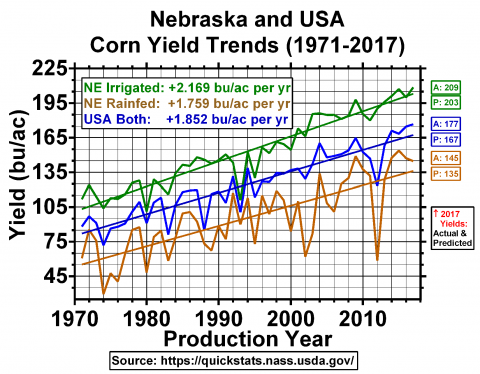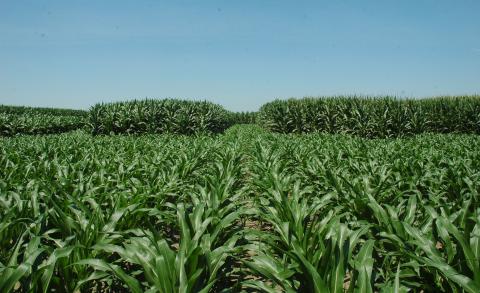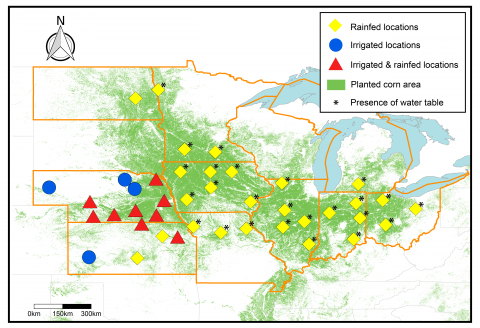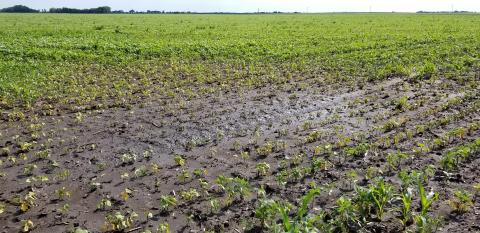Aug. 22 Corn Yield Forecast: Shorter Crop Cycle Did Not Lead to Below-Average Yield
August 23, 2018
Corn progress and yield forecasts for 41 sites across the Corn Belt indicate near- or above-average yields for most sites. High temperatures early in the season increased the rate of corn development and led to a shorter crop cycle, but do not appear to have diminished yields.
Soybean and Corn Yield and Acreage Trends
August 15, 2018
Nebraska soybean and corn yields have steadily increased from 1971 to 2017 in both irrigated and rainfed production systems. Nebraska irrigated soybean increased at a linear linear rate of 0.68 bu/ac, and irrigated corn increased at a rate of 2.17 bu/ac.
2018 Corn Yield Forecasts: Physiological Maturity Expected Before Historical Averages
August 2, 2018
Corn growth simulations across the Corn Belt indicate early corn maturity of one to two weeks for most sites. Simulated corn yields for rainfed and irrigated sites across the region near or above normal at most sites.
2018 Corn Yield Forecasts as of July 11: Higher Temperature Led To Faster Corn Development
July 13, 2018
Corn yield forecasts and crop growth stage estimates for the US Corn Belt, based on crop modeling and local input, start up this week for 2018. Corn development is well ahead of normal, with most sites in the central and southern fringes of the Corn Belt in the silking or grain-filling stages.
2018 Corn Yield Forecasts: Approach and Interpretation of Results
June 29, 2018
Here's how the Yield Forecasting Center will be developing corn yield forecasts for 41 locations across the Corn Belt during the 2018 crop season. Modeling, using Hybrid-Maize, weather data, and on-site verification help researchers estimate yields so growers can adjust management during the season, if necessary.
Flooding and Ponding in Soybeans
June 22, 2018
Soybean plants are generally able to withstand a fair amount of flooding in the short term; however, diseases favored by wet conditions may become a problem for the rest of the season. Research shows the length of time the soil is wet and the type of soil will affect plant injury and survival.
Flooding and Ponding in Corn
June 22, 2018
Ponding or flooding of fields affects corn differently at different stages, depending on duration of flooding and other factors. Growers should assess the potential for nitrogen loss and increase scouting for corn disease in these fields.
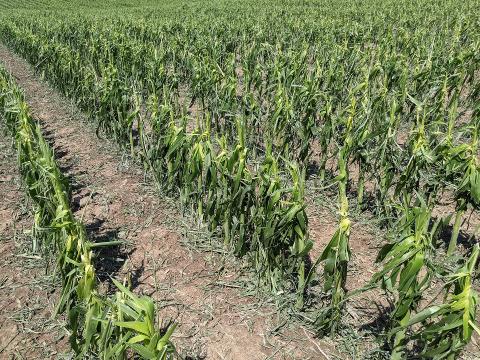
Mid-Season Hail Damage Assessments in Corn and Soybeans
June 25, 2021
When severe storms and hail hit your corn and soybean fields, it's important to estimate yield losses to determine the need for future inputs and alternative management strategies. This guide offers steps to evaluate mid-season hail damage and estimate potential yield losses.

